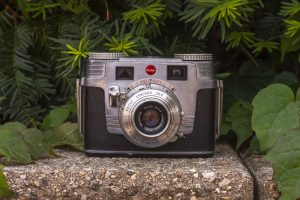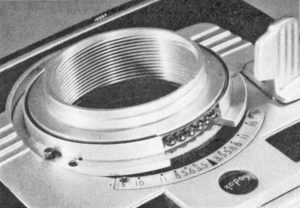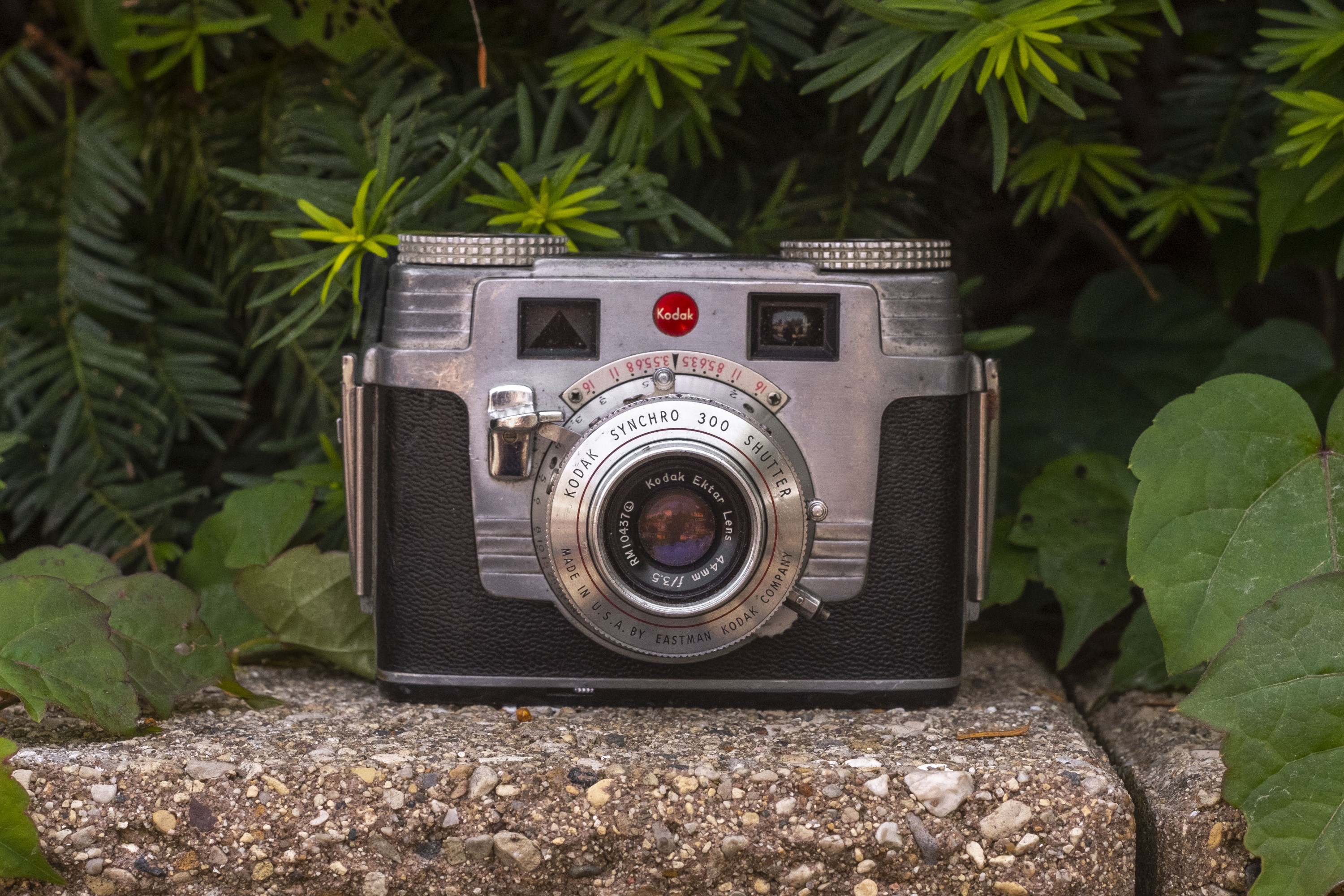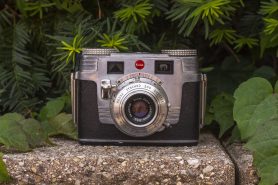The year was 1953, the Eastman Kodak company was on a string of successful cameras produced for the US military, from the Kodak 35 (called PH-324), Kodak Ektra, and Kodak Medalist, and the time had come to create yet another quality compact camera up to military specifications.

The Kodak Signet 35 would directly replace the Kodak 35 in the company’s lineup and would be available in civilian bare metal and military olive drab versions. The specs of the camera would be identical between the two versions, but accommodations for use by soldiers with gloves are evident, such as over sized advance and rewind knobs, and a larger than usual shutter release.
The Signet 35 is not a high spec camera and is outshined by many other cameras of the day. Featuring a 44mm f/3.5 Ektar lens and 4-speed shutter, it’s not going to take away any customers in the market for professional German rangefinders, but what it lacks in technical specifications, it more than makes up for in reliability and value. At a price of only $95, the Kodak Signet 35 offered military grade reliability and solid but not great performance for the equivalent of about $900 today.
In July 1953, Anne E. Ruder from Modern Photography took a look at the Signet 35 and put it through it’s paces and delivered this 6-page report. In February 2016, I took a look at one as well in this review for the Signet 35.

Despite a 63 year gap between reviews, my comments were largely the same as Anne’s. First marveling at the build quality and inherent ruggedness of the die cast aluminum body to which everything is mounted to. The focus ring is sealed with 50 ball bearings for ultra-smooth operation and the rangefinder has spring tensioned “V-block bearings” which eliminate all slack and maintain a smooth motion.
It has been said by many collectors that the shutter in the Signet 35 is it’s weak point. It’s overly simple, and isn’t completely sealed so dirt and grime can easily get in there. While that may be true, I’ve come across many Signet 35s in my time collecting and I’ve never seen one that didn’t work, or couldn’t be made working with a simple shutter flush. If I had to guess, the Kodak Synchro 300 shutter was chosen due to it’s simplicity and ease of repair, if something were to go wrong.

There are other benefits to the Signet 35 which aren’t immediately apparent until you start to use it. For one, the minimum focusing distance of 2 feet is the closest I’ve seen on a 35mm rangefinder. For most cameras, 3 to 3.5 feet is usually the closest you can go. Some rangefinder cameras with interchangeable lenses allow you to go closer than the minimum focus, but you lose the rangefinder coupling usually at distances less than 3 feet.
The entire back of the camera can be removed for ease of film loading, which was a nice convenience compared to other bottom and top loading cameras of the day. The viewfinder and rangefinder patch are unusually large and contrasty making focusing a snap. Finally, the size of the film compartment is compact, allowing for less wasted film on the leader and tail, which should help photographers eek an extra exposure or two out of a roll of film.
I’ve pretty much summed up the whole review already, and as I said before, my thoughts in 2016 nearly perfectly echo those by Miss Ruder’s from 1953. Despite having the opportunity to shoot many more technically well design and high quality rangefinders over the years, the Kodak Signet 35 remains a favorite of mine, and considering how inexpensive they still are on the used market, represent a hell of a bargain for collectors and shooters today. If there is another American 35mm rangefinder that’s more affordable, easy to use, reliable, or delivers better results than the Signet 35, I’d love to see it!
All scans used with permission by Marc Bergman, 2019.



As you’ve noted the Signet 35’s ready serviceability often gets attributed to the platoon photographer’s potential need to strip down, service/repair, and restore to action his camera in the field. This past week, amidst a blast of cold winter air, I’ve found two more ‘military’ justifications for the Signet’s design. First, and unlike the ‘vintage high-end’ SLRs and RFs I normally use, the Signet fits in my parka’s pocket. Second, and again unlike those other cameras, I don’t have to remove my gloves to extract, set, compose and shoot the picture with my Signet. it really is a brilliant design.
I believe the large knobs and shutter release were designed that way with the express reason being that they could be used with gloves! One of many reasons I love these cameras!